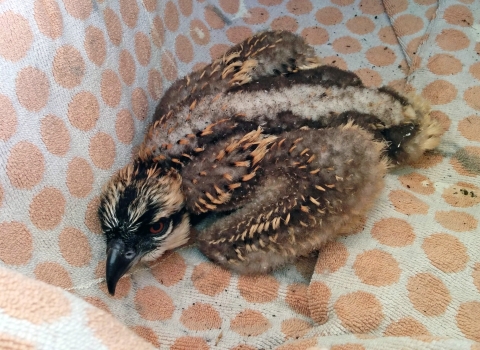People often think doing nothing is quite easy, but sometimes it can be awfully hard. Many of us want to help wildlife when they appear to be in trouble, but in some cases, we need to redirect these instincts.
RELATED: I Found a Baby Bird - What Should I Do?
Generally, the best thing to do is leave the animal alone. This protects both you and the animal.
Here are some more tips to help you deal with these situations:
- It can be illegal to capture or keep wildlife.
- Young wildlife usually are not orphaned, even if a parent can’t be seen. For example, deer leave fawns alone for hours to look for food, and baby birds often leave the nest before they can fly, hopping around on the ground for days with the parents sometimes elsewhere getting food.
- Legal issues aside, wildlife can be dangerous to people and the surrounding environment and don’t make good pets.
- By trying to help wildlife, you might really be hurting them. A man in Georgia saw a manatee out of the water. Concerned it was stuck, the man pushed the manatee back into the water. Scientists said the manatee was very likely just sunbathing on a warm December day.
- Your “help” could also end up hurting you.
- The man in Georgia was fine, but even people trained in manatee rescues are injured occasionally. Manatees may look slow and too bulky to cause injury, but a lot of strength and energy is hidden within their thick hide.
- Even if they are injured or sick, some animals carry rabies.
- Amphibians and reptiles can carry salmonella.
Finally, wild animals are hardier than we think. A 2015 car commercial depicts a couple “rescuing” a bird from cold weather and driving it south. This type of activity can be dangerous for the humans and the animal. Transferring a bird or other wildlife may disorient it or cause other problems.
Sometimes, though, wildlife definitely need our help. You’ll know a wild animal needs help if it has a visibly broken limb, is bleeding, has a dead parent nearby, is hopelessly tangled in some manmade object, or in the case of birds, is mostly featherless and sometimes the eyes are not yet fully open.
It takes a licensed wildlife rehabilitator, someone with special skills and proper permits, to successfully raise infant wildlife to the point they can be released into the wild.
Many state conservation agencies keep a list of licensed wildlife rehabilitators, but it's not always easy to find one. Researching local rehabilitators before you need one is a smart option. They can tell you what steps can be taken until help arrives.
That’s what Officer Richard Bare did when he received a call that some baby raccoons were orphaned after their mother was hit by a car. He took them to a wildlife rehabilitation facility.
Migratory Bird specialist Bob Murphy did that, too. In 2014, while Bob was getting his canoe ready for a canoe trip, a friend spotted an osprey hanging upside down, tangled in fishing line, way up in a nearby pine tree.
Bob eventually climbed the tree and cut away the fishing line. He then carefully placed the bird into a backpack, climbed down the tree and took the bird to a rehabber. The osprey was somewhat dehydrated and malnourished, had a slightly injured toe and suffered neurological problems from hanging upside down for some time. However, it recovered and was released.
These are “hands-on” examples of experts providing help when wildlife are in trouble, and they still both involve wildlife rehabilitators. Wildlife rehab is the answer for an injured animal. But, in general, the best bet for your safety, and that of the animal involved, is to leave wildlife alone, whenever possible keeping them truly wild.




